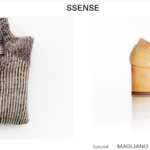Introduction to Sustainable Fashion
Sustainable fashion isn’t just a trend; it’s a movement that’s reshaping the way we think about clothing. With growing awareness of environmental issues, more people are questioning their shopping habits. The fast fashion industry, known for its quick turnarounds and cheap prices, comes at a steep cost to our planet.
Imagine opening your closet and seeing not just clothes but pieces that tell stories—stories of sustainability, ethical practices, and love for the Earth. Transitioning to an eco-friendly wardrobe is not only possible; it can be exciting and rewarding. Let’s explore how you can make mindful choices while still expressing your unique style. Embrace this journey toward conscious consumerism today!
The Environmental Impact of Fast Fashion
Fast fashion has transformed the clothing industry, but at a significant cost to our planet. The rapid production cycles lead to an overwhelming amount of waste. Each year, millions of tons of garments end up in landfills.
Water usage is another alarming issue. It takes 2,700 liters to produce just one cotton t-shirt—that’s enough water for one person to drink for over two and a half years.
Chemicals play a major role in the fast fashion process too. Toxic dyes pollute waterways, harming marine life and disrupting ecosystems.
Moreover, labor exploitation often accompanies this model, as brands cut corners on ethical practices while chasing profit margins.
The urgency to reconsider our shopping habits cannot be overstated. Every purchase holds power—the choice between supporting sustainable methods or contributing further harm impacts both people and the environment.
Building a Conscious Wardrobe: Where to Start
Start your journey by assessing your current wardrobe. Take a close look at what you own. Identify pieces that you wear often and those that just sit there collecting dust. This helps clarify needs versus wants.
Next, consider the quality of items rather than quantity. Invest in versatile, timeless pieces that can be mixed and matched effortlessly. Think about durability—choose garments designed to last.
Research brands with ethical practices before making purchases. Many companies now prioritize sustainability through responsible sourcing and fair labor conditions.
Don’t forget about second-hand shopping! Thrift stores offer unique finds while reducing demand for new clothing production.
Define your personal style and stick to it. Knowing what suits you will steer clear of impulse buys, helping create a cohesive wardrobe reflective of who you are.
Choosing Sustainable Fabrics and Materials
When building an eco-friendly wardrobe, the choice of fabrics and materials is crucial. Opt for organic cotton, linen, or hemp. These fibers require fewer chemicals and water compared to conventional counterparts.
Recycled materials are another fantastic option. Look for clothing made from recycled polyester, which reduces waste by repurposing plastic bottles. It’s a win-win situation for both style and sustainability.
Don’t overlook natural dyes either. They come from plants and minerals, offering vibrant colors without the harmful effects of synthetic dyes on our environment.
Tencel is gaining popularity too; this fiber comes from sustainably sourced wood pulp and uses less water in production. Soft yet durable, it’s perfect for daily wear.
By choosing wisely when it comes to fabrics, you contribute positively to the planet while enjoying versatile fashion choices that stand the test of time.
Maintaining a Sustainable Wardrobe: Tips for Longevity
Caring for your clothes is essential in maintaining a sustainable wardrobe. Start by washing less frequently. Many garments can be aired out or spot-cleaned, reducing wear and tear.
When you do wash, use cold water. It saves energy and helps colors stay vibrant longer. Opt for gentle cycles to protect delicate fabrics.
Air-drying is another simple practice that extends the life of your clothing. Avoid the dryer when possible; sunlight naturally sanitizes while preserving fibers.
Repair instead of replacing. A small tear or missing button doesn’t have to spell disaster—learn basic sewing skills or take items to a local tailor.
Store wisely. Use breathable garment bags and avoid overcrowding in closets to prevent creasing and damage over time. Embrace these habits for a wardrobe that lasts—and makes an impact on the planet too.
The Benefits of Adopting a Sustainable Fashion Lifestyle
Adopting a sustainable fashion lifestyle offers numerous rewards beyond just looking good. First and foremost, it promotes a healthier planet. By choosing eco-friendly brands, you contribute to reducing waste and pollution.
Your wallet also feels the benefits over time. Investing in quality pieces means fewer purchases and less frequent trips to replace worn-out items. This can lead to significant savings in the long run.
Sustainable fashion encourages creativity and individuality. You explore unique styles that resonate with your values rather than following fleeting trends. Each outfit tells a story of thoughtful choices.
Additionally, this lifestyle fosters community engagement. Many sustainable brands prioritize ethical practices that support fair wages for workers while connecting consumers with their product origins.
Embracing sustainability enriches your life on multiple levels—environmentally, financially, creatively, and socially. It’s about making informed decisions that reflect both personal style and global responsibility.
Conclusion
Sustainable fashion is not just a trend; it’s a movement that invites everyone to be part of the solution. By understanding the environmental impact of fast fashion, you can make informed choices about your wardrobe. Building a conscious closet begins with small steps, like choosing sustainable fabrics and materials.
Once you’ve curated your eco-friendly collection, maintaining it becomes essential for longevity. Simple practices such as proper washing techniques and storing garments correctly can extend their life significantly. This commitment not only benefits the planet but also enhances your personal style, making each piece uniquely yours.
Adopting a sustainable fashion lifestyle offers numerous advantages. It’s empowering to support ethical brands and contribute to positive change in the industry. Plus, there’s something deeply satisfying about wearing clothes that align with your values.
Embracing sustainability in fashion paves the way for a more mindful approach to consumption—one that respects both people and our planet. Each choice we make adds up, creating ripples of change that extend far beyond our wardrobes.


